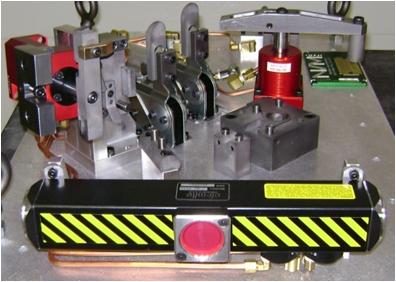1. Consistency of Parts vs. Desired Result
a. Consistent parts can be robotically welded with limited
tooling.
b. Good tooling can compensate for poorly produced parts.
i. “Grab and Pull” method to close weld gaps.
c. Poor piece part condition requires fixture to “recondition”
piece parts.
i. Hydraulic force used to form parts to desired state.
2. Tolerances of Completed Weldment are Tight
a. Tooling requires locators and clamps to be doweled and in
consistent position.
3. High Cycle Time
a. Fixture load / unload sequence must be as fast as possible.
4. Ergonomics
a. Operator Fatigue is a concern on high volume tooling.
a. Consistent parts can be robotically welded with limited
tooling.
b. Good tooling can compensate for poorly produced parts.
i. “Grab and Pull” method to close weld gaps.
c. Poor piece part condition requires fixture to “recondition”
piece parts.
i. Hydraulic force used to form parts to desired state.
2. Tolerances of Completed Weldment are Tight
a. Tooling requires locators and clamps to be doweled and in
consistent position.
3. High Cycle Time
a. Fixture load / unload sequence must be as fast as possible.
4. Ergonomics
a. Operator Fatigue is a concern on high volume tooling.
